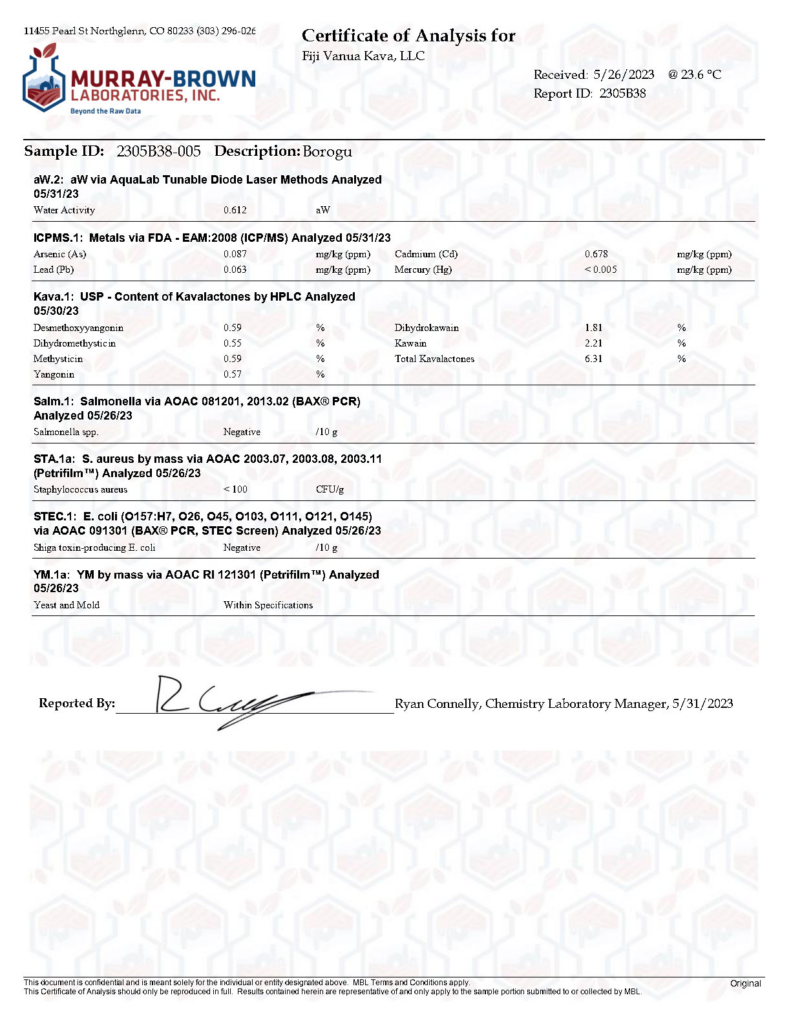What is a Chemotype?
A chemotype is a six-digit number that represents the ratio of kavalactones to each other in a kava plant. Kavalactones are the active compounds in kava responsible for its psychoactive effects. The six major kavalactones are:
- Desmethoxyyangonin (DMY)
- Dihydrokavain (DHK)
- Yangonin (Y)
- Kavain (K)
- Dihydromethysticin (DHM)
- Methysticin (M)
Interpreting a Kava Lab Report
When you look at a kava lab report, you will usually find a chemotype number, such as 462351. This number gives you an idea of the experience that specific kava will provide. The first three numbers of the chemotype are the main defining numbers for the experience. For example, kavas starting with ‘4’ will typically lean towards a heady and euphoric experience, while those starting with ‘2’ will be more heavy and sedative. Kavas with the number ‘5’ closer to the beginning of the chemotype will be very heavy. The percentage of kavalactones will indicate the strength of the experience.
Factors Influencing Chemotype
According to research by Patricia Siméoni and Vincent Lebot, various factors determine the kavalactone content and chemotype in kava. These include the geographical location of the plant, its age, and its organ (roots, stumps, or basal stems). The study found that chemotype is genetically controlled and stable across different locations (Page 0).
Variability in Chemotype
The study also highlighted that there is significant variation among different cultivars originating from the same island. For example, cultivars grown on the island of Vanua Lava produce an average kavalactone content that is half the average content of cultivars found in Central Santo (Page 5).
Chemotype and Kavalactone Content
It’s important to note that kavalactone content is not constant and varies from location to location. For instance, kavalactone content in cultivar Borogu varied from 5.9% in Altakre to 11.1% in Vansasa (Page 6).
Non-Noble Kavas
Non-noble kavas often start with 25 or 52, although this is not a hard and fast rule. These types of kavas are generally considered to be of lower quality and are not suitable for regular consumption.

Siméoni, Patricia, and Vincent Lebot. 2002. “Identification of Factors Determining Kavalactone Content and Chemotype in Kava (Piper Methysticum Forst. F.).” Biochemical Systematics and Ecology 30 (5): 413–24. https://doi.org/10.1016/S0305-1978(01)00093-X.
Wang, Jun, Weiyue Qu, Harry C. Bittenbender, and Qing X. Li. 2015. “Kavalactone Content and Chemotype of Kava Beverages Prepared from Roots and Rhizomes of Isa and Mahakea Varieties and Extraction Efficiency of Kavalactones Using Different Solvents.” Journal of Food Science and Technology 52 (2): 1164–69. https://doi.org/10.1007/s13197-013-1047-2.



